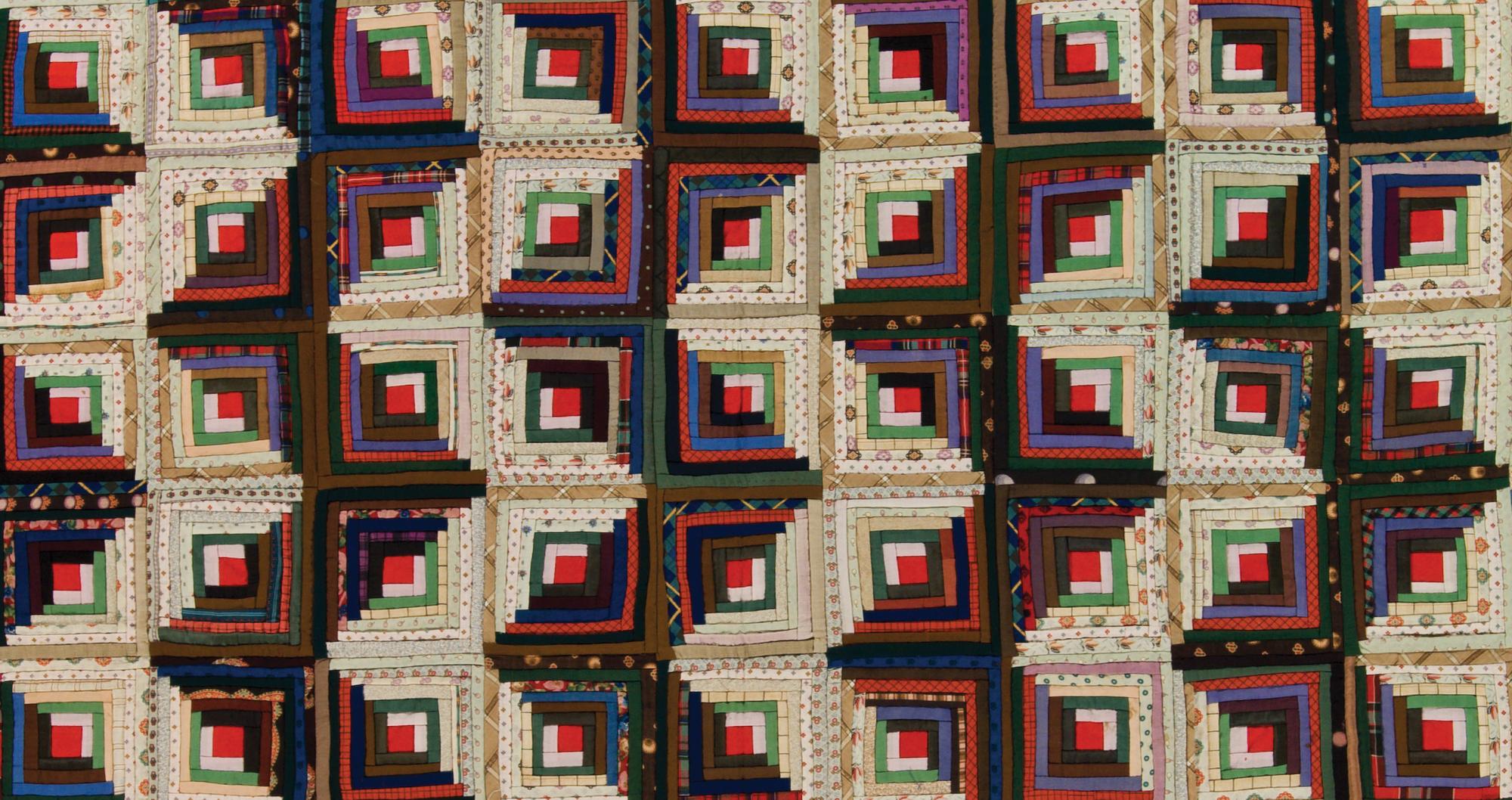
Design Dynamics of Log Cabin Quilts
March 7-Nov 29, 2014

Log Cabin quilt blocks are visually dynamic for a very simple reason: CONTRAST. In the three Log Cabin block designs, contrasting light and dark areas fall on either side of diagonal lines.
And when many blocks are set together in a quilt, these lines move, quiver, ripple, dart, or spin across the surfaces. They are Dynamic! Dynamite!
The perennially popular Log Cabin quilts, whether made with Standard Log Cabin blocks, Courthouse Steps, or Pineapple variation blocks, resonates for makers and collectors even today. At the IQM, Log Cabin quilts pop up in most of the museum’s major collections, including the Jonathan Holstein Collection, the Ardis and Robert James Collection, and the Byron and Sara Rhodes Dillow Collection, from which the quilts for this exhibition were selected.
Log Cabin quilts will likely remain popular to make and view for years to come because of their dynamic, timeless, and straightforward designs.